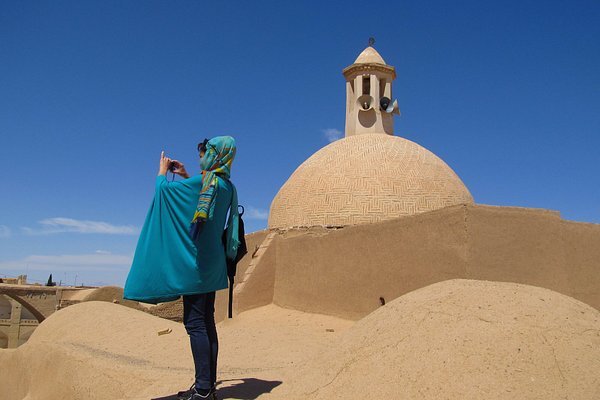Na’in prepares to become tourist hub: official

TEHRAN–Na’in’s tourism directorate has announced plans aimed at making the oasis city a major tourist destination.
Na’in’s tourism chief has said his directorate provided a scheme to turn the ancient city into a tourism hub in seven years, ISNA reported on Saturday.
Strategies have been formulated to boost tourism amenities and the hospitality industry through the close collaboration of private investors, Mahmoud Madanian said.
“The city of Na’in has a strategic and special position by being located on the main transportation route of the country in the center of Iran so that an average of five to 10 thousand cars pass through it every day, and this amount reaches 15,000 cars on official occasions and events,” the official explained.
So far, over 1,200 historical sites and relics have been identified in Na’in, which is a great potential to draw sightseers, he stated.
The history of Na’in dates back to nearly 2000 years, which makes it one of the oldest continuously settled towns on the Iranian plateau.
Na’in lies 170 km north of Yazd and 140 km east of Isfahan. Like much of the Iranian plateau, it has a desert climate, with a maximum temperature of 41 °C in summer and a minimum of -9 °C in winter.
During ancient times, the city was at the junction of a desert road that connected Tabas and Mashhad. It used to be an important crossroads on converging trade routes since Sassanid times. Na’in was known for its ceramics and textiles; today it's primarily known for fine hand-knotted carpets and for hand-loomed camel-wool cloaks, which are produced in the neighboring villages.
The Islamic Republic generated some $2.5 billion in international tourism revenue over the past 12 months, mainly driven by holidaymakers from the neighboring states. In addition, traveling and tourism accounted for 3.1 percent of GDP in 2020 while the number hit 4.1 percent in 2021, according to data compiled by the Ministry of Cultural Heritage, Tourism and Handicrafts.
Furthermore, Iran recorded about three million foreign tourist arrivals during the period. Last September, the country initiated preliminary steps for a bounce-back, restarting the issuance of tourist visas following a 20-month hiatus, and easing COVID-19 protocols for fully vaccinated passengers.
Before the pandemic, Iran’s tourism had constantly been growing, reaching more than eight million visitors in the Iranian calendar year 1398 (started March 21, 2019). That surge, however, helped prejudices to become thick and thin. Iran’s trump card is that the country benefits from a wide variety of travel destinations ranging from seacoasts and lush green woods to towering mountains and harsh deserts. As a wallet-friendly destination with hospitable people, Iran has long been a desired destination for nature lovers, birdwatchers, powder chasers, culture devotees, pilgrims, museum-goers, foodies, adventurers, and medical travelers, to name a few.
AM
Leave a Comment